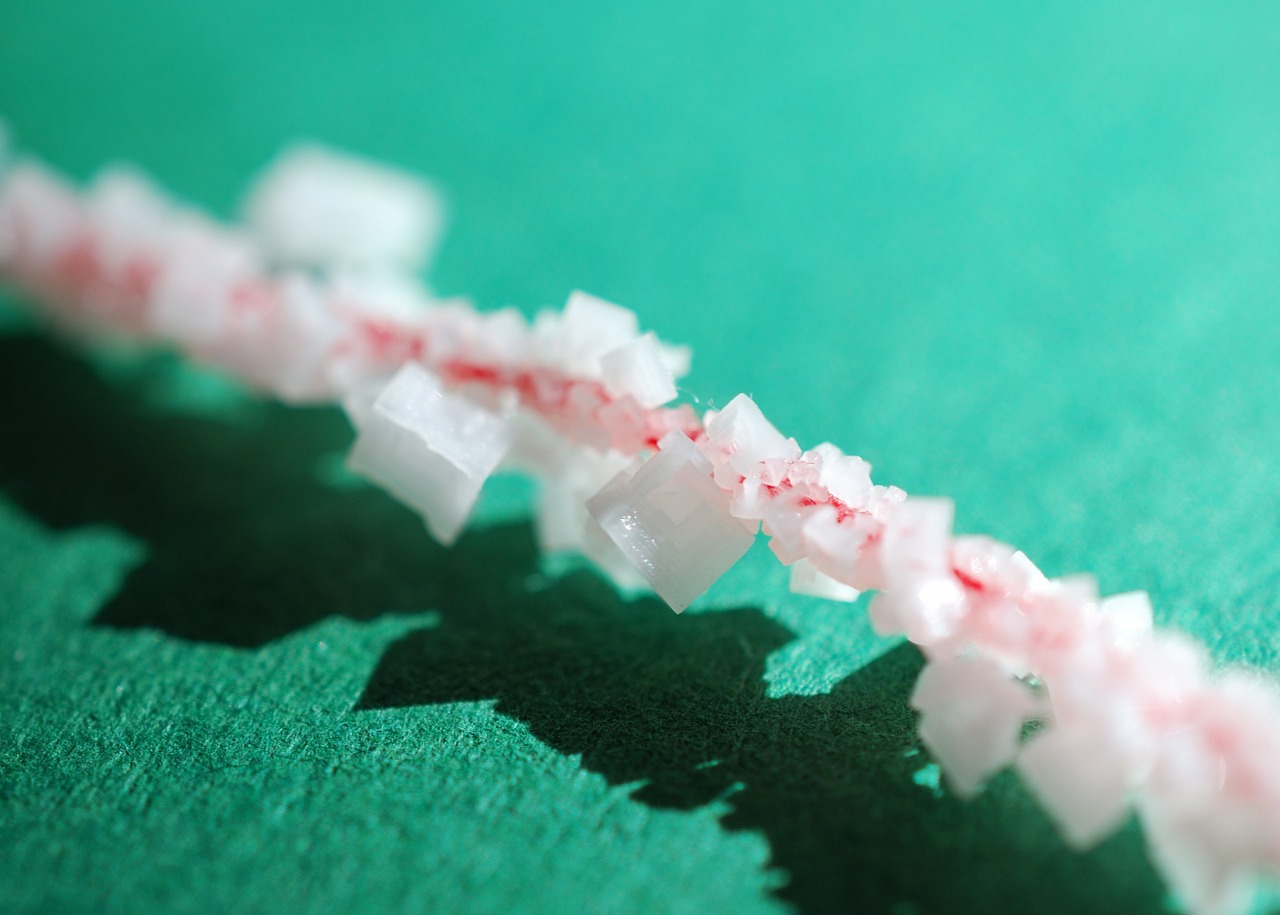Step 1
Take a pipe cleaner/wire and twist into the desired letter and/or shape.
Step 2
Use the fishing line to suspend the pipe-cleaner/wires from a wooden skewer over an empty container.
Step 3
Boil a large pot of water and add nine tablespoon of borax powder.
Step 4
Mix the borax and water together ensuring it is mixed until fully dissolved.
Step 5
Add food colouring of your choice to the mixture.
Step 6
Pour the mixture from the pot into the container where the name/letters are suspended.
Step 7
Wait for approximately 8 hours before lifting the suspended names/letters out of the solution.
Use plastic wires instead of pipe cleaners
Prepare the letters in different containers if you want the pipe cleaners to be dyed in different colours
to make a crystalline bridge get a piece of rope and two jars containing the borax solution. Place each end of the rope in a jar making sure they touch the liquid and suspend the rope between the containers. Allow the rope and jars to stand and crystals to form.
Instead of borax, baking soda or Epsom salt can be used to form the crystals.
Make sure that the pipe cleaners are suspended towards the middle of the container and are not touching the edge of the containers as this might cause crystals to form as well.
Take care while handling the boiling water and heating mantle to prevent unwanted injuries such as burns.
Ensure that the borax mixture is saturated. The saturation point of a mixture can be determined by adding excess borax which settles at the bottom of the boiling pot.
Make sure the borax solution is mixed thoroughly so that equal quantities of borax are found suspended within the liquid.
Take care when handling borax as it can prove to be a toxic chemical when inhaled or ingested.
https://wellnessmama.com/26407/borax-safe/
Let’s think of the sea for a moment. We can simply say that the sea is just water with a lot of salt dissolved in it. To make salty water you just have to add salt to the water and on mixing it seems to vanish, however, that is not the case, the salt has been dissolved in the water. When you add salt to cold water you will notice that not all the salt dissolves, some collect at the bottom of the container, and no matter how much you mix it will not dissolve. But what happens if the water is warmed, a relatively large amount of salt can be dissolved into the water at a much faster rate. This shows that as temperature increases the greater amount of salt can be dissolved. However, when the water cools the amount of salt that the water can hold decreases, and thus the excess salt deposits out in the form of crystals. This can also occur when the solvent evaporates, leaving solute crystals behind, this is how sea salt is made for cooking.
http://www.bbbswnc.org/wp-content/uploads/2014/10/Borax-Crystal-Snowflake1.pdf
Why do we use pipe cleaners?
To increase surface area for maximum crystal formation.
How can you ensure that the mixture of borax in water is saturated?
Solid borax settles at the bottom when saturated, no more borax can be dissolved into the solute.
What is the process of crystal formation called?
Crystallization.
How do the crystals form?
When the solvent (water) evaporates, the solute is left behind forming crystals. Crystals can also form as the solute saturation point decreases as it cools.
A crystal is a symmetrical structure composed of molecules arranged in a unique, repeating pattern. In this experiment borax is used to create the crystals. When the water is warmed, it is capable of holding more borax molecules in solution, compared to cold water. This is because when water is heated, the water molecules move further apart from each other leaving more space between the molecules for borax to dissolve in. When all the spaces between the water molecules have been filled, no more borax can be dissolved and thus saturation has been reached. When the solution cools, the water molecules move once closer to each other and the liquid cannot hold as much borax in solution and it begins to crystallize and grow along the pipe surface.
Borax is an inorganic compound composed of boron, sodium, oxygen and water. Borax is polar in structure but possesses weak intermolecular forces of attraction which give sugar it’s crystalline structure. For the borax to dissolve, energy is required to break these bonds (this is provided by the warmed water) but this also results in the formation of hydrogen bonds between the polar ends of the borax and the polar water molecules.
http://chemed.chem.purdue.edu/genchem/topicreview/bp/ch18/soluble.php
As the water temperature is increased the rate of solubility also increases due to the fact that the water molecules are now moving faster and with more energy, so any collisions with the water and the borax molecules are more likely to become disassociated with each other and be dissolved in the water.
When the water cools, its solubility decreases as the system attempts to compensate for the loss of energy by reforming the intermolecular chemical bonds between the borax molecules, which creates more energy, the borax molecules form bonds amongst themselves resulting in the formation of an ordered and repetitive pattern. It is in this manner that crystals form.
Applications
Crystallization is the primary procedure that is undertaken in the production of rock candy. Rock candy is an edible crystal composed of sugar (glucose) that gives the appearance of natural crystals. They can be eaten alone or used in food decorating.
http://b.steamexperiments.com/experiment/sweet-rocks/?_sfm_number_of_people=0+99
Research
With the advancement of nanotechnology crystallization has become an essential method of extracting and identifying polymers.
http://www.sciencedirect.com/science/article/pii/S0079670015001112
Use different materials such as rubber bands and paper and see if crystal from or if they form differently.
Try varying the concentration of borax to see how this affects crystal formation.
Try different solutes that dissolve in water, salt, sugar etc




